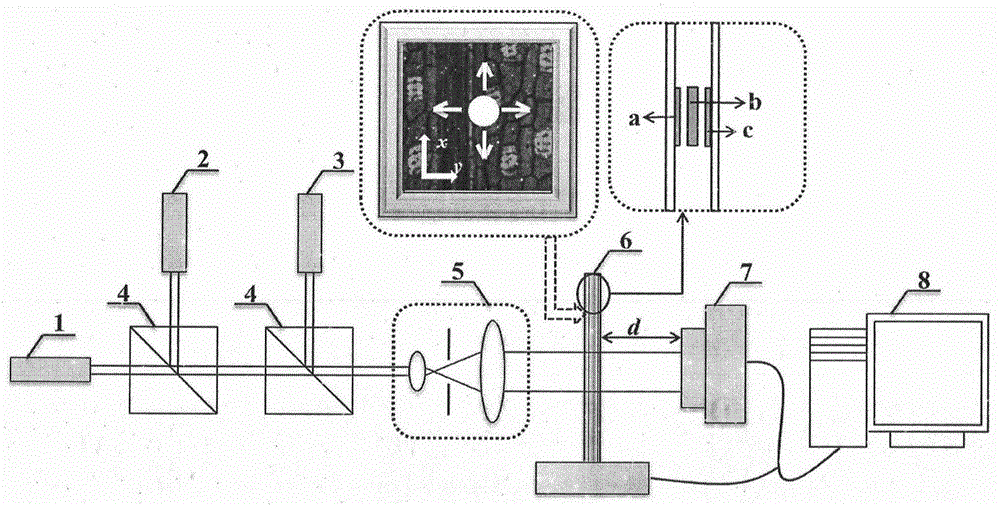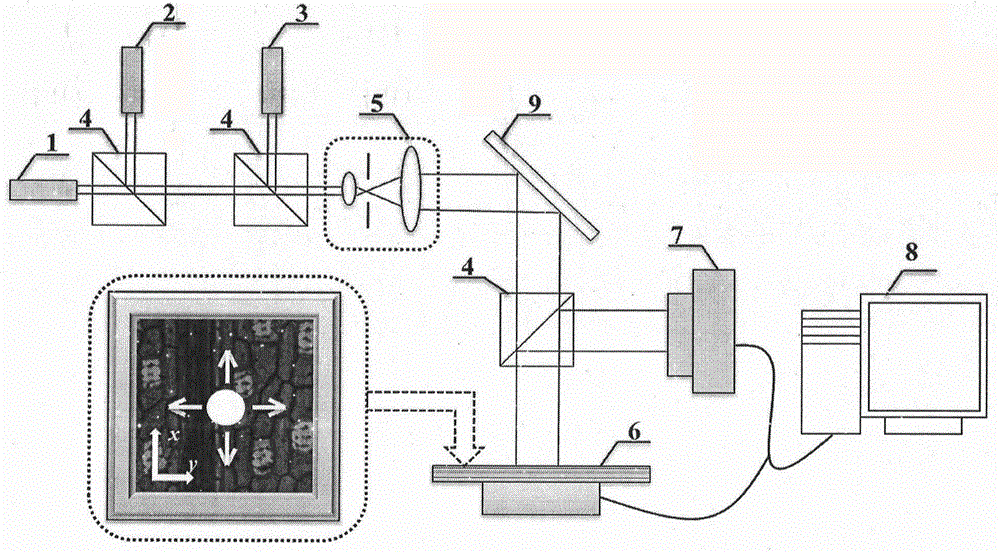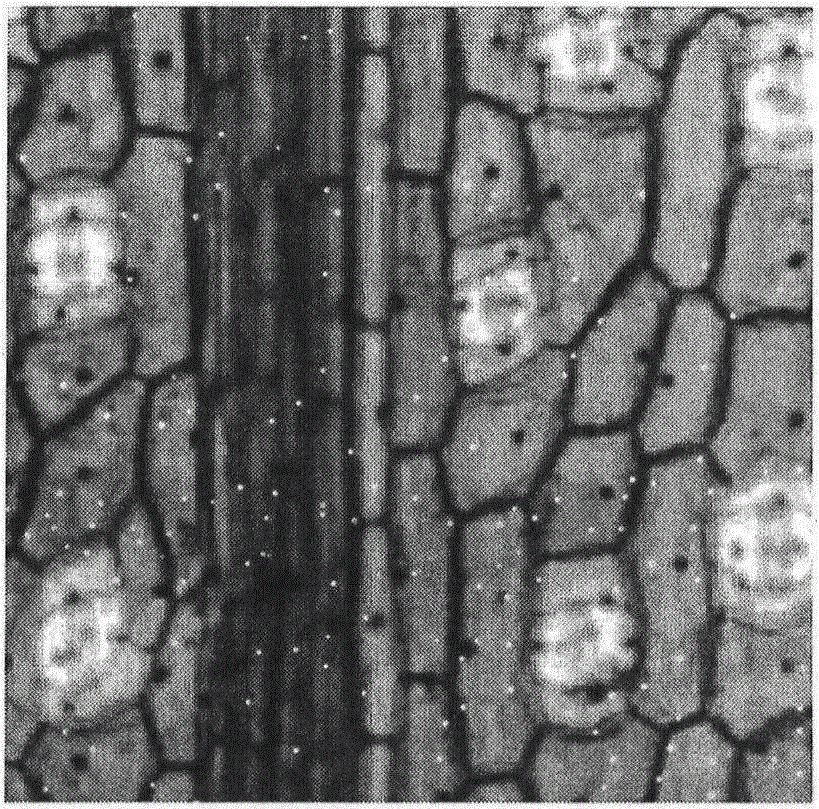Multi-wavelength lamination imaging technology facing to three-dimensional information recovery
A three-dimensional imaging, multi-wavelength technology, applied in the field of three-dimensional imaging, can solve problems such as layer-to-layer interference
- Summary
- Abstract
- Description
- Claims
- Application Information
AI Technical Summary
Problems solved by technology
Method used
Image
Examples
Embodiment Construction
[0075] The present invention will be further described below in conjunction with the accompanying drawings and embodiments.
[0076] Figure 1a and Figure 1b They are respectively the optical path structure diagrams of two typical implementations of the imaging method of the present invention in transmission and reflection multi-wavelength lamination imaging. The structure includes a red laser 1, a green laser 2, a blue laser 3, a beam splitter 4, a collimator beam expander system 5, a two-dimensional translation platform and a sample to be tested 6, an image sensor CCD7, a computer 8, and a mirror 9. The distance from the translation platform 6 to the image sensor 7 is d. The translation platform 6 and the image sensor 7 are respectively controlled by a computer 8 to complete phase shift addition, stack scanning and image recording. First turn on the red laser 1, turn off the green laser 2 and blue laser 3 for experiments, and record a set of intensity images under red lig...
PUM
 Login to View More
Login to View More Abstract
Description
Claims
Application Information
 Login to View More
Login to View More - R&D
- Intellectual Property
- Life Sciences
- Materials
- Tech Scout
- Unparalleled Data Quality
- Higher Quality Content
- 60% Fewer Hallucinations
Browse by: Latest US Patents, China's latest patents, Technical Efficacy Thesaurus, Application Domain, Technology Topic, Popular Technical Reports.
© 2025 PatSnap. All rights reserved.Legal|Privacy policy|Modern Slavery Act Transparency Statement|Sitemap|About US| Contact US: help@patsnap.com



